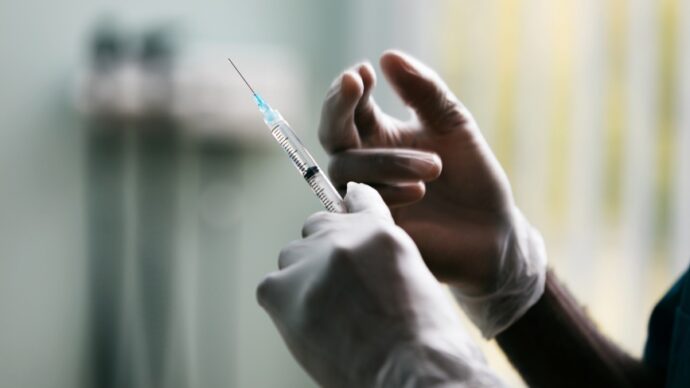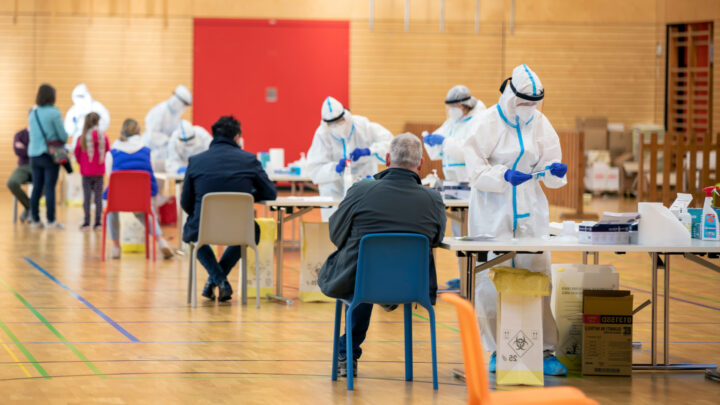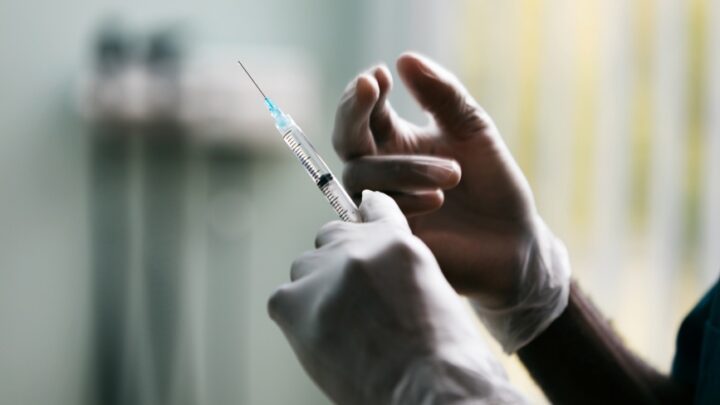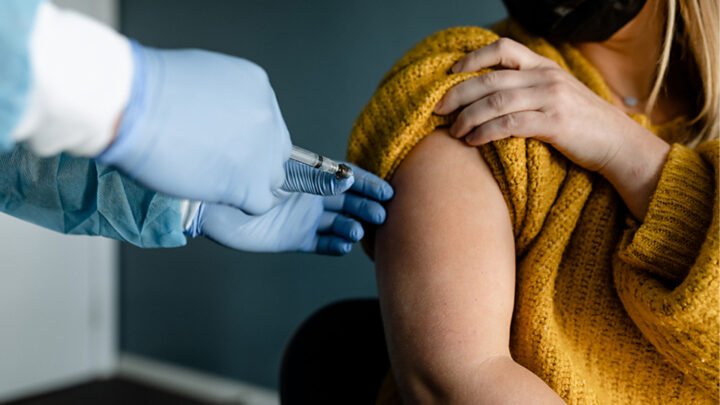
Five years after the first emergency use authorization for a COVID-19 vaccine, vaccination protocols continue to shift dramatically. Recent changes to vaccine schedules, distribution and eligibility criteria continue to shape how healthcare providers navigate immunization decisions. These evolving policies affect not only clinical practice workflows but also patient trust and access to preventive care.
For physicians managing patient populations with varying risk profiles, these changes present complex decisions about resource allocation and patient counseling. As vaccine policies continue evolving, some physicians are finding themselves at the center of patient education efforts, working to address misinformation and hesitancy while managing expectations about vaccine availability.
Navigating the changing covid boosters and availability
Government agencies continue to make changes to vaccine schedules and distribution impacting clinical practice. In the U.S., the Centers for Disease Control (CDC) announced updates to its adult and child immunization schedules on October 6, 2025. Its recommendations now favor “individual-based decision-making” over a previous “blanket recommendation for perpetual COVID-19 boosters,” according to the statement.
Survey data from the international Sermo community shows mixed reactions to changes to COVID-19 vaccine schedules. When asked about COVID-19 vaccine schedule modifications, 42% of physicians expressed concern about potential healthcare system demands from rising cases amid declining vaccination rates. Another 23% view increased scrutiny as beneficial, while 16% worry about increased mortality risks. Only 7% report having no concerns about these changes.
Some patients have their own concerns about fall vaccine availability, Sermo polling shows. 31% of polled physicians report patients showing moderate concern about vaccine access, while 15% describe patients as very concerned. However, 42% indicate their patients aren’t worried about availability issues.
Physicians have taken to Sermo to voice their concerns. “Reduced vaccination rates directly increase susceptibility,” writes a pediatrician from Saudi Arabia. “This creates larger, more frequent outbreaks, overwhelming hospitals, clinics, and public health resources already under strain. Seasonal COVID-19 waves combined with other respiratory illnesses could become significantly more disruptive.”
A general practitioner from Spain emphasizes the ongoing need for vaccine development. “The future of COVID-19 vaccines involves ongoing development and updates to target emerging variants and address waning immunity, with a focus on improved efficacy, broader protection, and addressing the needs of vulnerable populations,” they stated.
The updates in COVID vaccine distribution and availability
Updates to COVID-19 vaccine protocol have created uncertainty about patient access. In May of 2025, the U.S. Food and Drug Administration (FDA) announced an updated Covid-19 vaccination regulatory framework that will continue to approve the vaccine for high-risk groups and “encourage manufacturers” to conduct additional studies on the benefit–risk of vaccination in healthy adults. Shortly after, U.S. secretary of health and human services Robert F. Kennedy Jr. announced that COVID-19 vaccines would be removed from the CDC’s list of recommended shots for healthy pregnant women and children.
Throughout the changes, physicians’ perspectives on fall vaccine availability reveal concerns about equitable access. Sermo survey results show 44% of respondents believe their most vulnerable patients will receive vaccines but express uncertainty about access for less vulnerable patients. Meanwhile, 39% expect vaccines will be available for everyone who wants them, and 16% worry that even vulnerable patients may face access barriers.
Looking beyond immediate fall vaccination challenges, some physicians anticipate ongoing issues. When asked about vaccine access challenges extending beyond current problems, 43% expressed concern that all vaccines may become less available. Another 38% believe current issues will resolve, allowing universal access, while 17% remain uncertain about future trends.
Some Sermo members are in favor of recent shifts in vaccination protocols. “In my view, the recent changes to COVID-19 vaccination schedules reflect a necessary shift toward targeted protection rather than mass immunization,” states a general practitioner from Mexico. “As the virus evolves and more people gain hybrid immunity, it makes sense to focus on vulnerable populations who are still at risk of severe illness.”
Others have pointed out potential downstream effects. “These changes may affect insurance coverage for vaccination, which would also potentially affect vaccination rates,” notes a pediatrician from Mexico.
Addressing patient concerns about the COVID-19 vaccine updates
A 2024 study reported that public acceptance of vaccination has gone down in recent years (the study focused on the U.S., specifically). Patient attitudes toward COVID-19 vaccines reflect their feelings about safety perceptions, approval processes and personal risk assessments. Effective patient counseling requires physicians to understand their concerns.
Physicians themselves expressed generally positive attitudes about vaccine safety in a Sermo poll, with 45% expressing complete confidence in vaccine safety and approval processes. Another 34% consider vaccines safe while maintaining some concerns about approval procedures. However, 8% remain uncertain about vaccine safety (with no approval process concerns), and another 8% question both safety and approval processes.
Physicians are tasked with conveying information on vaccine safety to hesitant patients. “I am a primary care and urgent care physician who sees COVID cases regularly and who also administers the vaccines,” explains a U.S.-based Sermo member. “I have seen first hand the harm caused to those who choose not to get the optional vaccines like COVID and FLU.”
Patient experiences with breakthrough infections could influence their vaccine perceptions. Those who get sick after vaccination may assume that the vaccines were ineffective. “The main purpose of COVID-19 vaccines was to keep people from getting so sick from COVID-19 that they needed to be admitted to the hospital,” notes a pediatrician on Sermo. “Many people, myself included, have had vaccines and still got a Covid infection, but it seemed like a bad cold that lasted 3 to 4 days.”
Building patient trust requires addressing legitimate concerns while providing balanced information. “We can’t say that vaccines are 100% safe in every case, or that there aren’t side effects that patients deal with and should be well informed of,” acknowledges a neurologist on Sermo. “That being said, there’s no question that vaccines have saved countless lives. We need to build trust back up with the public.”
“Vaccines should be available for those who want them,” writes a radiologist from the U.S. “We need more transparency on vaccine safety and potential risks or side effects. Public trust was severely harmed during the pandemic and years after.”

What diminished COVID-19 vaccine accessibility means for doctors
Due to disparities in COVID-19 vaccine distribution, some areas have been deemed “vaccine deserts,” where vaccination services aren’t available nearby, according to a 2025 study. Vaccine deserts are associated with lower vaccination rates, according to the study.
Patient education becomes more critical in the face of accessibility issues. Physicians must now explain not only vaccine benefits and risks but also navigate supply chain realities and policy changes that affect patient access. This educational role extends beyond individual encounters to community health advocacy.
Proactive communication strategies become essential for managing patient expectations and maintaining therapeutic relationships. Ideally physicians will stay current with rapidly changing guidelines while translating complex policy decisions into practical patient guidance. This requires additional time investment in continuing education and policy monitoring.
Clinical workflow adaptations can help physicians accommodate changing vaccine protocols and distribution methods. Physicians may need to modify appointment scheduling, inventory management and referral processes to ensure patients receive appropriate immunizations through available channels.
Physicians who feel so inspired can expand their advocacy beyond individual patient care to include broader public health promotion and policy influence. Physicians increasingly find themselves positioned to advocate for clearer public health messaging, equitable access policies and evidence-based decision-making in vaccine distribution.
While it requires effort, a family medicine physician on Sermo views vaccine education as an inevitability. “It’s our job to recommend vaccines,” they write. “The majority of the population look to us for guidance on that topic.”
Moving forward in an evolving vaccine landscape
The evolving nature of COVID-19 vaccine accessibility presents challenges that require adaptive approaches from healthcare providers and systems. Physicians face the complex task of providing evidence-based recommendations while navigating practical access limitations and addressing diverse patient concerns.
Key takeaways from current trends emphasize the need for enhanced communication strategies that build trust while acknowledging uncertainties. Physicians are challenged with balancing evidence-based recommendations with realistic expectations about access and availability.
For healthcare professionals seeking peer support and collaborative problem-solving, communities like Sermo provide essential resources for sharing insights and developing solutions to common challenges. Join the Sermo community to connect with more than 1.5 million healthcare professionals worldwide and participate in meaningful discussions about modern patient care challenges.















